Mind the GAP
I didn’t realize it until after the fact, but in the process of moving from Ohio to Pennsylvania, I was in West Virginia for about ten minutes. Which was longer than the hour or so I’d spend in Maryland a few days later.
Al, my host in Pittsburgh, had gone to a lot of effort to find me a bike-friendly route into town. The only problem was it added a lot of distance, which wouldn’t necessarily be such a problem, but it looked like a thunderstorm was rolling in that afternoon. After taking a rail-trail for a few hours in the morning, I hopped off of it and made a beeline for downtown, instead of taking the roundabout bike path, way out of town and past the airport, which would’ve taken a few extra hours. Of course, that raises the question: Why doesn’t the bike path simply go straight to where cyclists need to go?
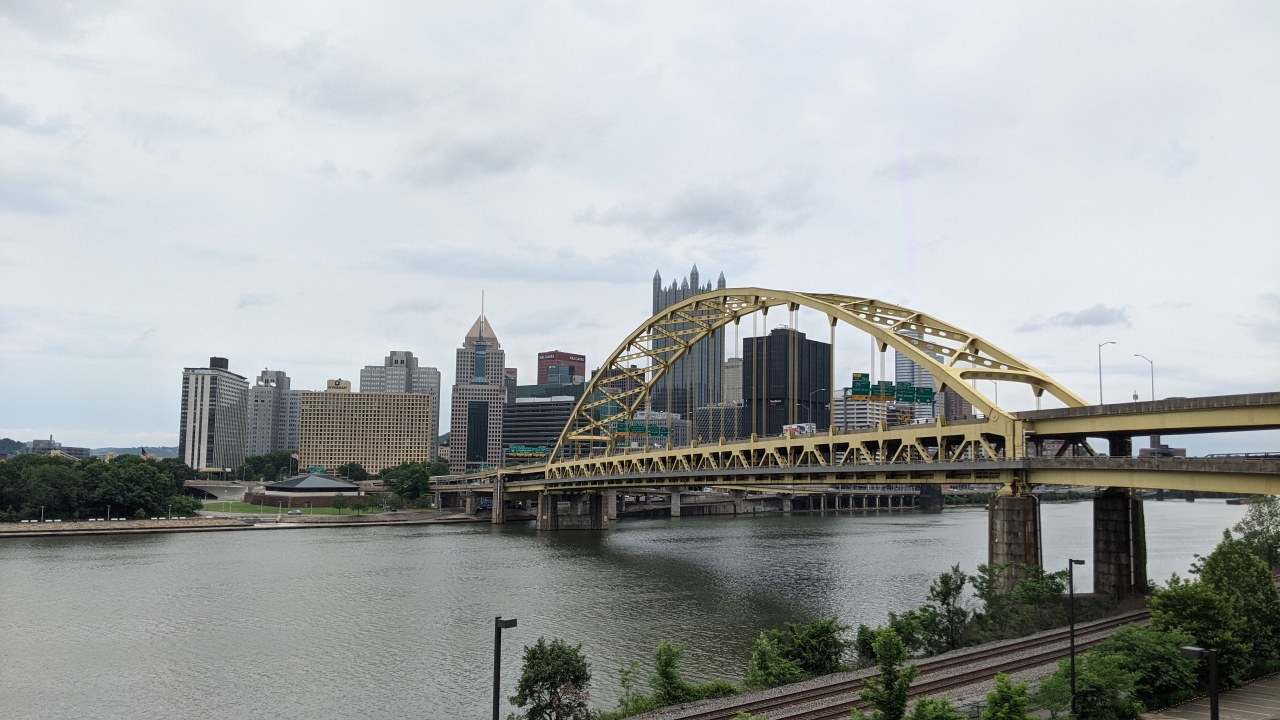
I made it downtown by noon, and since it had barely started raining and the forecast wasn’t looking as grim, I visited Point State Park, where the Monogahela and Allegheny rivers merge and become the Ohio River. Point State Park serves as the starting point for the Great Allegheny Passage (aka the GAP), a 150-mile rail-trail I’d be riding for the next few days. During my brief visit, three other groups of cyclists rolled up and took group pictures, many of them exclaiming “Mile zero!” as they began their adventure. I’d already covered over 1,000 miles by that point.
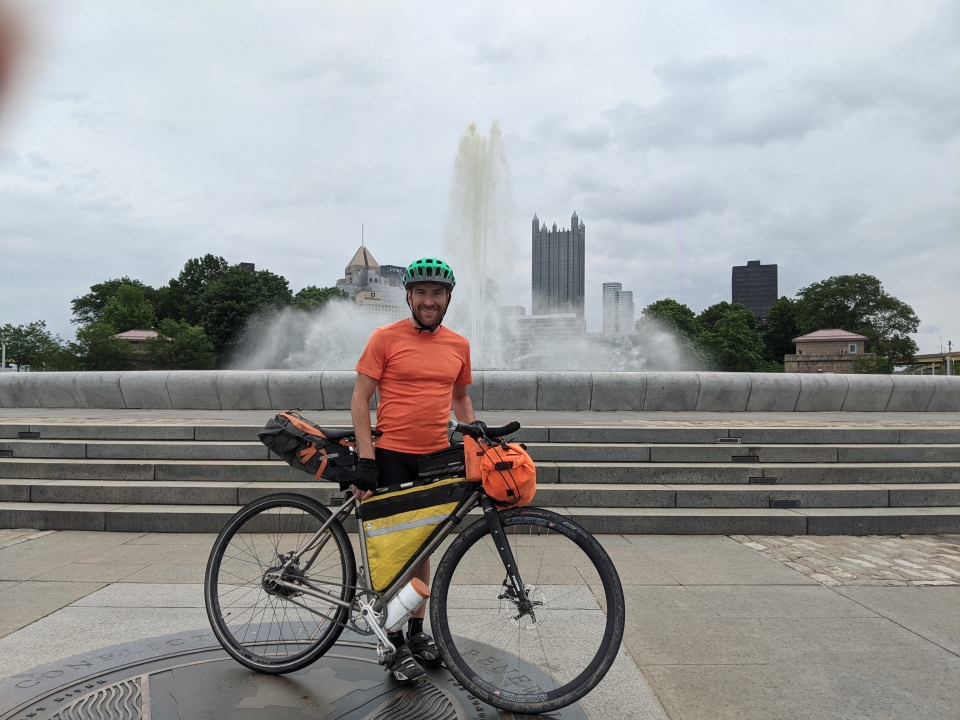
Both the University of Pittsburgh and the Carnegie-Mellon University campuses are small, and the Pitt campus in particular is oddly-shaped, to the point you’re never quite sure when you’re on campus and when you’re not. Neither campus was allowing people to walk into a building due to COVID protocols.
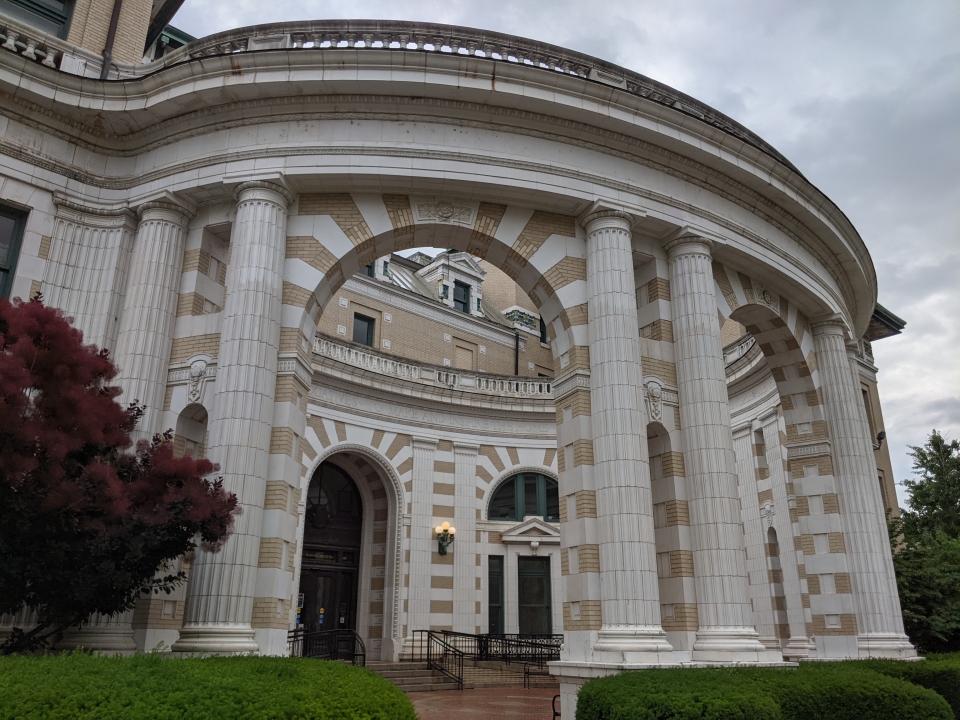
After spending about three hours getting to know Pittsburgh, I made it to my host. Al is an incredibly accomplished ultracyclist, though he doesn’t go on about it. Instead, we talked about bikes simply in the context of doing long distance for multiple days. It’s only after a while that it comes out he’s got a long history of winning races that are 500 miles or longer, the kind that take four days to finish and you average two hours of sleep per night during that time. Holy crap.
Al’s basement was a combination of a bike shop, indoor training facility, and trophy room. That last part was remarkably extensive. He had countless medals on display.
Houses in this part of the country are different. For one thing, many of them are over 100 years old. As a result, you’ll see houses that are classical, stately, and beautiful, as well as houses that have been bludgeoned by time, often on the same block. How you treat something makes a difference.
Northeastern houses are mostly made of wood, as opposed to brick where I live, which makes sense. Southern soil is easier to dry into brick, and the northeast has a lot more trees, so you work with what you have. Due to the building material and age, everything creaks in every house I’ve seen in the northeast. A ninja couldn’t sneak around in these things.
Old houses usually have a smaller footprint, but still have plenty of internal square feet, accomplished by almost always being multiple stories and always having a basement.
Basements are essentially unheard-of where I live, and northern people appear to take them for granted. They’re simply wonderful. It’s like having a whole extra house! For whatever reason, basements are almost always unkept and treated as little more than a storage shed, even though it’s the most comfortable room in the house, due to being insulated by the Earth. In the summer, it’s cool, and in the winter, it stays warm. Why isn’t that the primary living area, and the rest of the house used for storage? If you flipped it around, you may not need heat or air conditioning at all.
Air conditioning, unsurprisingly, would become a decreasingly common feature of houses (and buildings in general) as I continued northeast. That makes sense; only three days out of the 32 on this tour reached the 90s in Fahrenheit, and all of those days were considered extreme outliers for the area.
Al and I spent about an hour sitting on his front porch (another notable feature newer southwestern houses lack), eating popcorn and talking about bikes. It was cloudy and comfortably cool outside. The afternoon thunderstorm never came in.
Al and his cycling buddies were planning on riding 150 miles the following day, two of them taking on that distance for the first time. Their route was on the GAP, same as mine, and Al figured I’d be riding at about the same pace, so he invited me along. However, once he told the gang he was bringing someone, one of them wasn’t happy about it. Instead, Al told me to head out early, and if the group caught up and I was able to keep up, there was no reason I couldn’t ride with them. But showing up together was out.
Somewhat surprisingly, our pre-ride meal the night before was pizza. Good pizza, I’ll stress.
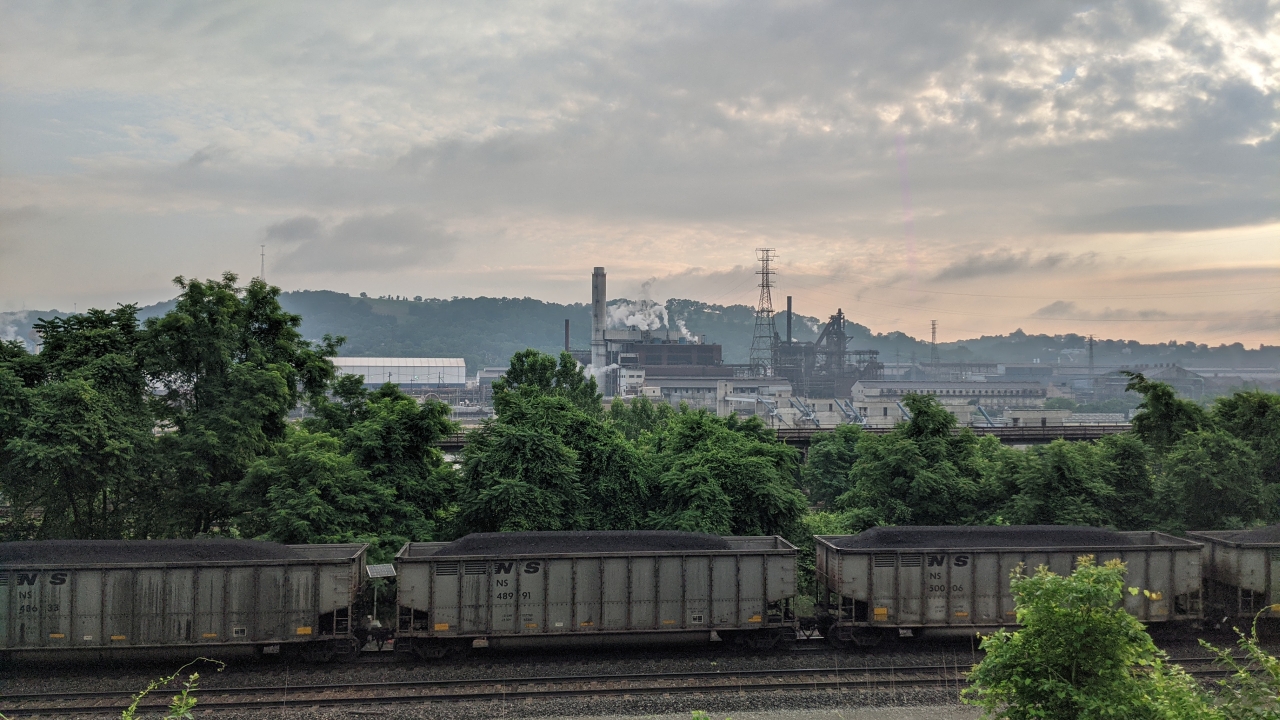
Al’s group caught up to me after I’d been riding for about an hour, and I went ahead and latched on. They moved at a good pace, but with a little effort, I was able to match it. As we rode for the next few hours, I talked at least a little with all of them, with the exception of the tall guy who never wanted me along.
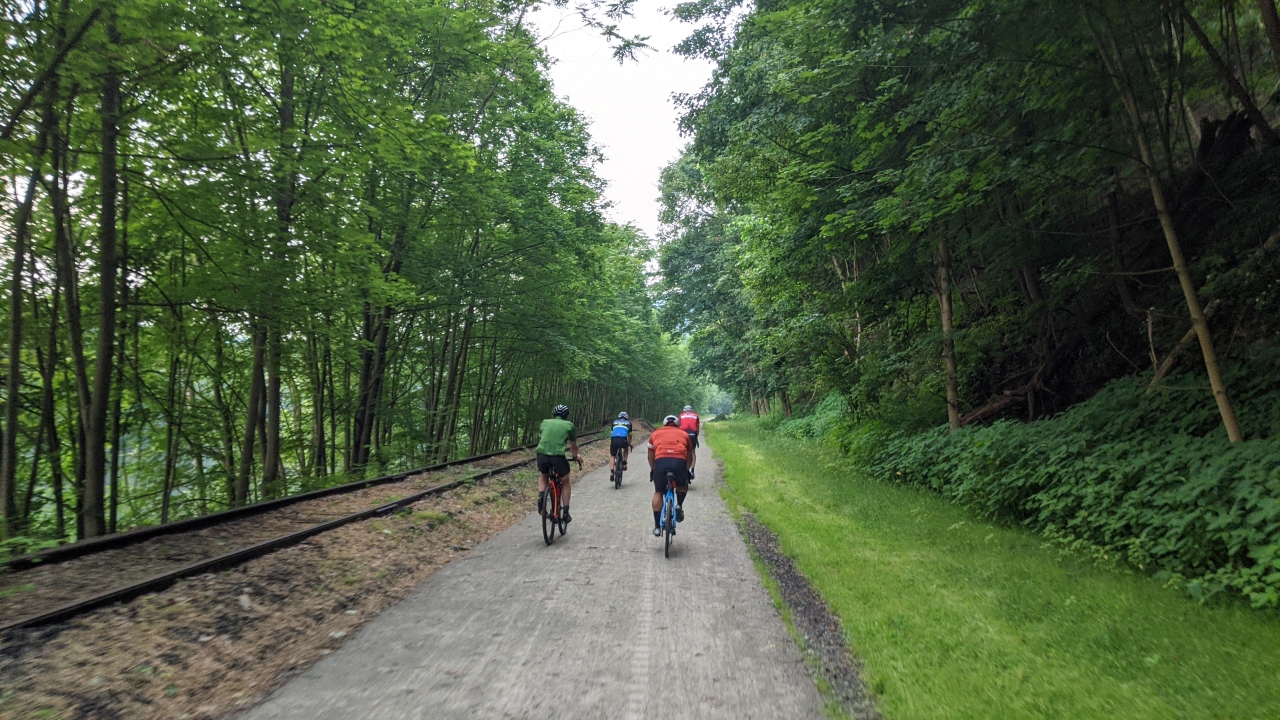
75 miles flew by, in part because it was a flat, easy ride, partially because having company helps pass the time, but also because the riding was so pleasant. Much like the Katy Trail, the GAP is mostly wooded, scenic, serene, and quiet. The way bike riding should be. Far superior to having to listen to big loud metal scary things all day.
As we continued, the hills grew larger, and the trees grew taller to match. While the area became quite hilly, the GAP, being an old rail bed, is essentially entirely flat, so you get to enjoy the scenery of the hills without having to climb any of them.

One of the things I notice about trees in the east is how straight they are. Normally, straight lines aren’t common in nature, but here, a crooked tree would be a rarity. In Texas, the trees aren’t as close together, so the best way to absorb lots of sunlight is to branch out sideways and take up as much area as possible. Here, the trees are so close together, they compete for sunlight, and the only way a tree can get any sunlight is by growing straight up. Otherwise, it’d be in the shade of all the other trees.

75 miles in, we stopped in a town, some of us bought sandwiches, and after a quick photo op, the gang turned around and headed home to complete their 150-miler, having spent less than half an hour taking a break. I suppose that’s the way to do it when you’re covering that kind of distance. I continued eastbound alone.
About an hour later, I was stopped on the trail by a park ranger. Someone had gotten hurt while paddling the river and they were being loaded into an ambulance, which was parked on the trail. I gladly stopped and waited.
By the end of the hour, I was less happy. As it turned out, the patient was already dead by the time they got him off the river, but for one reason or another, the paramedics couldn’t move a dead body slightly to the side for a few moments and let all the bikes through. Dozens of cyclists had been backed up on each side by the time we were once again allowed through. The authorities also wouldn’t let us simply walk around through the woods, which clearly indicated this had more to do with a power trip than anything. The patient was dead. No one’s life was hanging in the balance, nor their health. And yet, some guy was thinking, “I won’t let bikes through because I want exactly all twelve feet of the trail’s width to do my job, and not two feet less. I want this amount of space for over an hour, and not 30 seconds less. And if someone finds another solution, that’s not OK either. Because I’m in charge and I said so.”
If this were a roadway with cars, it would be unacceptable to shut down a street, in both directions, simply because you can. But since it’s a bike path, people think it’s fine. Bicycles aren’t second-class transportation.
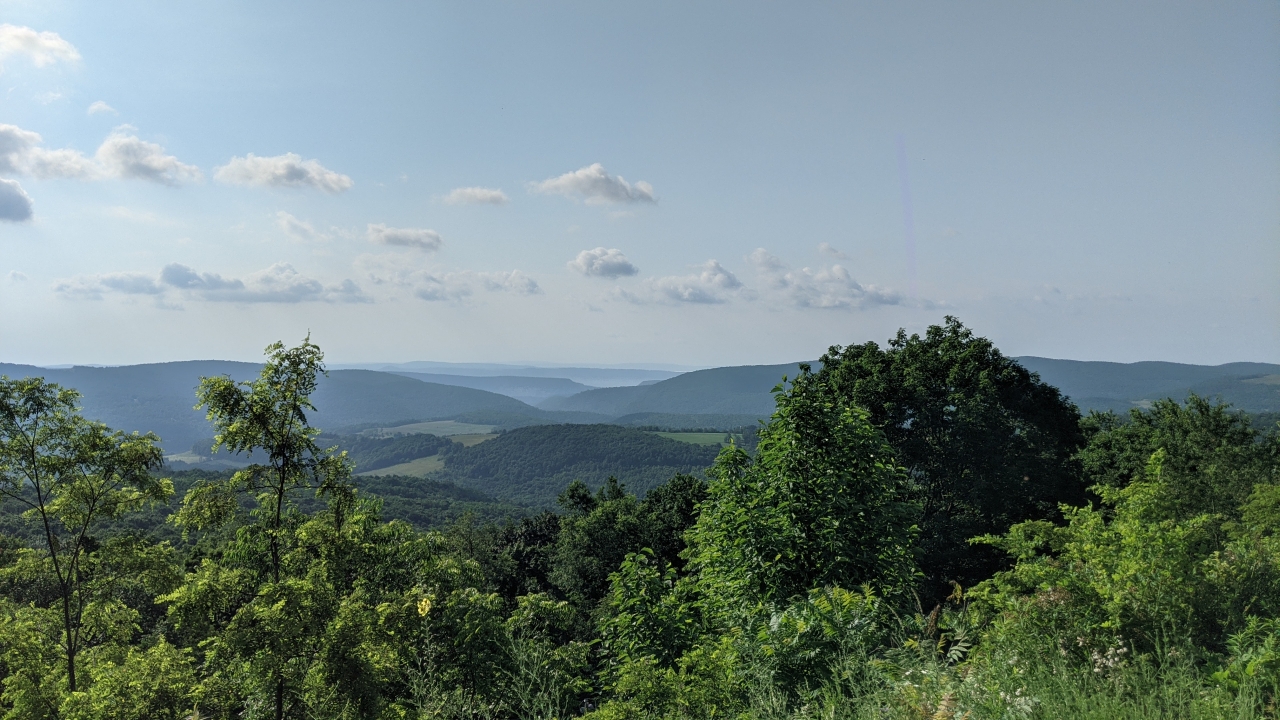
After my second-longest day, only slightly shorter than the ride into Hopedale two days prior, I found a hostel and decided to treat myself. There weren’t many other options; camping along the GAP isn’t permitted, and since it’s a popular route in a not-so-populated area, the only other choice would’ve been an expensive B&B. The hostel was unlocked when I got there, and no one else was inside. I could’ve quietly stayed the night for free, but my conscience got the better of me, so I called the owner and paid up. I’ve paid less than $35 for a hotel room, and here, that only came with a bunkbed and no blanket. Not to mention the owners live upstairs, and they have a toddler. Remember how I said all these old wooden houses creak and make noise? Yeahhh...I paid money to listen to thundering footsteps and screaming for several hours.
For whatever reason, there are about as many Mountain Dew bottles on the side of the road as there are everything else combined, and that’s been the case this whole time. Either Mountain Dew is especially popular in the midwest, or it’s especially popular on road trips and with truck drivers, or maybe it’s popular among the type of people who are trashy enough to throw empty bottles out the car window.
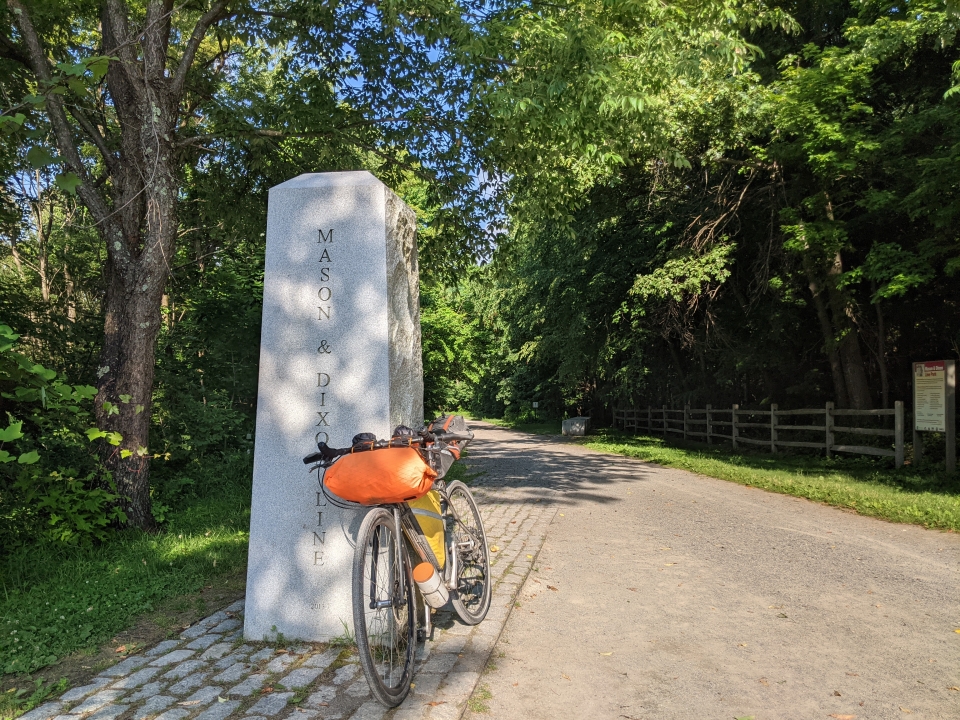
Another long day of riding, which involved about an hour spent in Maryland, put me in a small town with no plans for lodging. After visiting the fire station and three or four churches and finding no one there, I attracted the attention of a guy on the street. He suggested riding to the next town and camping in the city park. So I did. That city park had several pavilions, which came in handy during the thunderstorm that night. My tent is good and has been through a thunderstorm before, but I was still glad to be under something.
Central Pennsylvania put me in Amish country once again, and it’s interesting to see the different “levels” of Amish that exist. Sometimes you’ll see someone wearing the traditional clothing, speaking Dutch, driving a Ford F-150. Some Amish are OK with machinery but not electronics, and some are the other way around. Some are OK with bikes as long as all the parts are hand-made (which limits choices to very old-fashioned bikes), and others ride E-bikes. It’s interesting to note that some of the Amish wouldn’t let themselves wear athletic clothing like I do, but choose to drive a car to the store instead of riding a bike, whereas I’m the other way around. We all make different choices, sometimes for moral reasons, and sometimes because we simply feel like it.
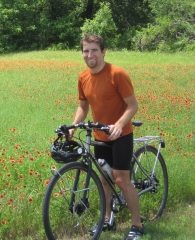


 June
June

